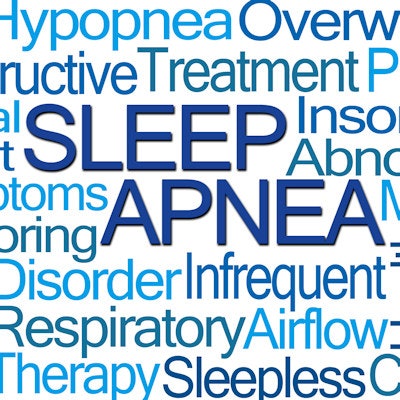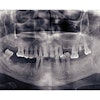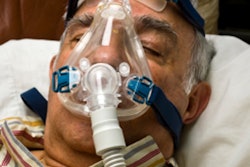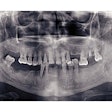
Are there differences between obstructive sleep apnea (OSA) patients who undergo maxillomandibular advancement (MMA) surgery and those managed medically? A new study found that those treated surgically were younger and had a lower body mass index (BMI) and significantly lower rates of various comorbidities.
For the study, the researchers examined the medical records of OSA patients treated at one hospital either medically or with MMA surgery. The findings were presented last week at the 2017 American Association of Oral and Maxillofacial Surgeons (AAOMS) meeting in San Francisco.
"Morbid obesity in the nonsurgical cohort is likely linked to greater medical comorbidities," wrote the researchers, led by oral surgeon Richard Ngo, DMD, of Boston, in their abstract. "The additive contribution of an OSA diagnosis needs to be elucidated."
Different profiles
Obstructive sleep apnea patients treated with surgery often have contributing anatomic findings, such as mandibular retrognathia, constricted posterior airway space, and increased upper airway length. Body mass index may be less of a factor in the development of OSA in these patients, according to the study's authors.
To learn more about the comorbidity profiles of OSA patients treated with MMA surgery and those managed medically, the investigators conducted a retrospective cohort study of these patients treated at Massachusetts General Hospital in 2001 through 2015. They hypothesized that surgical OSA patients would have fewer medical comorbidities than nonsurgical OSA patients.
The study included 51 surgical and 71 nonsurgical patients, all with OSA confirmed by polysomnogram. All patients had complete clinical records that included BMI, respiratory disturbance index, apnea-hypopnea index, and oxygen saturation nadir results.
The surgical patients were significantly younger than the nonsurgical patients (average age, 41 and 49, respectively). A greater proportion of the surgical patients were male (84.3%), compared with the nonsurgical group (67.6%). Average BMI for the surgical group was 29.7 (the high end of "overweight"), which was significantly less than for the nonsurgical group at 42.3.
The groups did not differ significantly in terms of the mean sleep parameters of the respiratory disturbance index, apnea-hypopnea index, and oxygen saturation nadir. Also, the prevalence of depression was similar between the groups, at 43.1% in the surgical group and 46.5% in the nonsurgical group.
However, all 10 medical comorbidities that the researchers examined in the patients' clinical records were significantly more common in the nonsurgical than the surgical group.
| Prevalence of comorbidities in surgical and nonsurgical sleep apnea patients | ||
| Comorbidity | Surgical patients | Nonsurgical patients |
| Hypertension | 45.1% | 63.4% |
| Congestive heart failure | 2.0% | 21.6% |
| Atrial fibrillation | 0.0% | 14.1% |
| Peripheral edema | 0.0% | 15.5% |
| Hypertriglyceridemia | 21.6% | 43.7% |
| Pulmonary hypertension | 2.0% | 14.1% |
| Pulmonary embolism | 0.0% | 11.3% |
| Asthma | 5.9% | 32.4% |
| Chronic obstructive pulmonary disease | 2.0% | 21.1% |
| Type 2 diabetes mellitus | 5.9% | 45.1% |
"As compared to patients that had nonsurgical treatment, OSA patients that underwent MMA were younger, had a lower BMI, and had significantly less hypertension, cardiovascular disease, hyperlipidemia, pulmonary hypertension, obstructive pulmonary disease, and type 2 diabetes," the authors concluded.



















